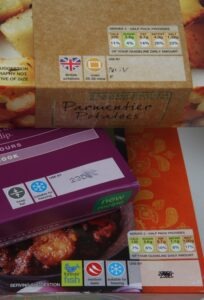Product Recall Prevention
Introduction
Insufficient control of food product packaging, labelling and coding increases the risk of a product recall, which is not only costly, but can have a negative impact on your reputation as a reliable supplier.
Many retailers have developed comprehensive Codes of Practice (CoPs) relating to coding, packaging and labelling verification which their suppliers must adhere to in an attempt to reduce the risk of product recalls.
In an effort to assist you in identifying any product recall risks in your own factory, we have put together a checklist of points to consider to ensure you are working in a safe, compliant environment for packaging, labelling and coding.
Risk Assessment
As you know, effective product recall prevention starts with a risk assessment. Having an accurate, up-to-date and documented risk assessment in place is also a key compliance requirement in most retailer CoPs, and will, no doubt, address all coding, labelling and packaging risks through the various stages of the production process.
Some of the questions you should ask to determine the level of risk of incorrect packaging, labelling and coding include:
- How many products are produced on site?
- Are there similarities between different packaging formats?
- How many labels/packs are used on site?
- How many production runs/changeovers occur per day?
- How many allergens are handled on site?
- Are there similarities between ingredients where one may contain an allergen and the other is allergen-free?
- What are the risks to the consumer if a coding or packaging error occurs (eg the risk of an allergic reaction, the risk to health)?
- What are the risks of legal action if a coding or packaging error occurs (eg wrong weight declaration, wrong ingredient, wrong country of origin, etc)?

It’s fair to say, the greater the number of products produced, packaging formats used and allergens handled on-site, the greater the risk of human error during job set-up and changeover. By identifying the risks, the easier it will be to determine the steps needed to prevent product recalls. Many retailer CoPs mandate an automated coding and packaging verification solution to minimise, if not eliminate, the risk of coding, labelling and packaging errors.
Packaging, Labelling and Coding Checks
All food packaging should comply with minimum legal standards around legibility, presence of product information (such as ingredients and allergens) and relevant date codes etc. As with inaccurate data, missing information or ineligible information can also be grounds for a product recall.
All sites should therefore have a robust packaging, coding and labelling process, supported by appropriate training to ensure workers understand their responsibilities and are kept up to date whenever changes occur.
Is there a process in place to ensure packaging complies with minimum legal standards?
- Are all staff involved in packaging, coding and labelling trained in this process?
- If not, are trained staff present on every shift and able to enforce this process?
- What steps are in place to ensure the right information is printed on the right product?
- Is this risk-appropriate (eg use of automated coding in high-risk environments, barcode scanning to prevent a packaging and labelling mismatch, etc)?
- What steps are in place to ensure labels and date codes are legible?
Many plants rely on automation to ensure their product packaging, labelling and coding is accurate and legible. This can take the form of an end-of-line vision inspection system, automated coding, or a combination of the two. Remember, however, that some label verification solutions, such as an end of line vision system, may require additional resource and technical training to achieve consistent results.
Quality Checks
![]() In some factories, quality checks may be required on the packaging line to ensure products are fit for purpose. Examples include weight and temperature checks, as well as testing for foreign bodies (eg with a metal detector or X-Ray equipment).
In some factories, quality checks may be required on the packaging line to ensure products are fit for purpose. Examples include weight and temperature checks, as well as testing for foreign bodies (eg with a metal detector or X-Ray equipment).
In order to prevent sub-standard products reaching the consumer, it’s important to ensure that quality checks are carried out and the appropriate corrective action taken, as necessary. A slow-moving paper-based process may make it difficult to identify a quality issue before it escalates into a product recall risk.
- Are risk-appropriate quality checks carried out on the packaging line?
- Are the results of any quality checks recorded and by whom?
- If paper check sheets are used, what is the process and how is it enforced?
- How are the records stored and processed?
Conclusion
As you can see, most of the product recall risks in the packaging hall arise from areas where human error can occur, and many retailer CoPs address this by mandating the use of automated systems in high-risk environments.
By removing or reducing the scope for human error from the packaging hall, the risk of incorrectly coded, mislabelled or mispackaged products is much lower. And, with undeclared allergens alone accounting for more than half of product recalls in the UK, that can only be a good thing.



